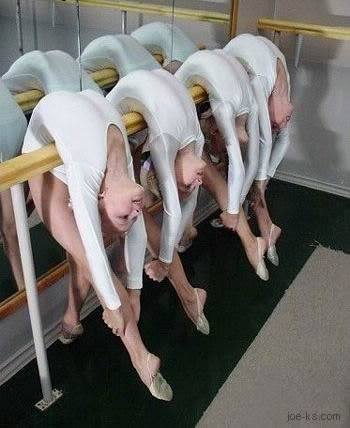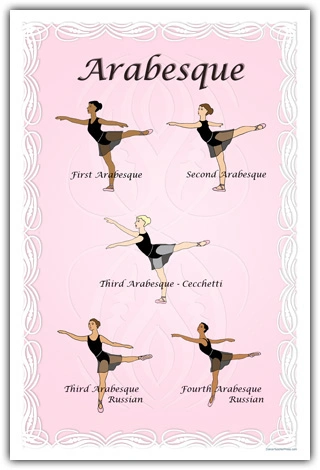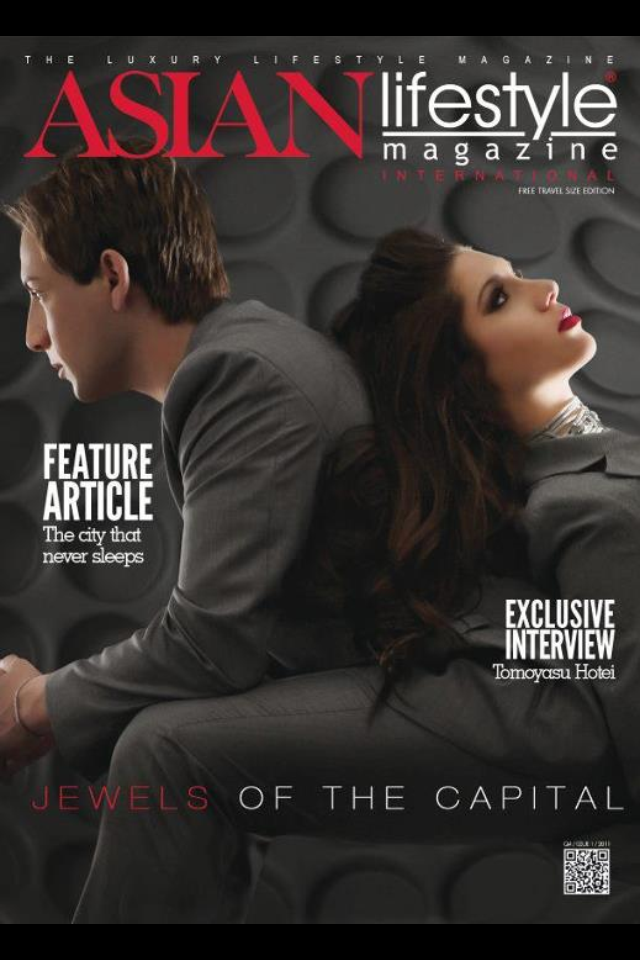Author: RDA ACADEMY
Dancers should be pushed to the limit???



Read this article and let us know what do you think….
Two grandes dames of classical ballet have ridiculed repeated claims that today’s dancers are driven to exhaustion and starvation and say pushing them to the limit is the nature of the art.
Gillian Lynne and Beryl Grey, both now in their 80s, reached the height of their profession dancing alongside Margot Fonteyn and Moira Shearer in Covent Garden almost 70 years ago.
In an interview ahead of an appearance at the Ealing Music and Film Valentine Festival in London, they also criticised contemporary performances that focus on technical acrobatics at the expense of emotion and acting on stage.
There is widespread concern within the industry about gruelling schedules, eating disorders and pressure on dancers to stay unnaturally thin. But Lynne, 87, a leading soloist who became one of the UK’s foremost choreographers, said: “Dancers should be pushed. That way you find out the brilliant ones, you strengthen their techniques and their stamina. Stamina is so important.”
Emphasising that ballet is not a “soft touch”, Lynne said: “I don’t buy this new thing that everybody says they’re overworked. Dance is a hard world. You can’t be pushed enough. I’ve always had to watch my food. There’s nothing wrong with it. Most dancers want to be slim. Quite honestly, dancers have to diet. You have to be underweight.”
Grey, 86, one of the UK’s greatest prima ballerinas, said: “The more you perform, work and rehearse, the stronger you get.” She added that it’s much more comfortable now for dancers, as companies have health departments, masseurs and physiotherapists. She said: “For the man in the street, a ballet dancer is worked very hard. But we didn’t have any of that in the war. We just danced and enjoyed every minute.”
Dancers can almost be too cosseted, she feels: “Dance is all about energy. The more you dance, the more you build up that strength and resilience to accidents. You have to be careful not just to roll up to a masseur the moment you’ve got a tight calf or something.”
Acknowledging the technical abilities of today’s dancers, Grey said: “There doesn’t seem to be as much depth of spirit and soul. It’s much more acrobatic. People want to see millions of pirouettes and legs going remarkably high. It’s a bit more like a circus, and the depth of feeling that one tried to express [previously] isn’t always there. You find it in one or two dancers. I think it reflects society. We’re a much more superficial society … Even though art does reflect its age, I would love to see less accent perhaps on technique and more feeling. I often come away impressed [with] what I’ve seen, but it hasn’t moved me.”
Lynne agrees about the lack of emotions. She said: “After half an hour, I sometimes say, ‘What is it saying? Where is it going?'” She ridiculed health and safety restrictions on dance: “It’s dead against theatre. There’s an awful lot of holding back now which I don’t agree with. The theatre is about danger, risk and excitement.”
Lynne recalled schedules of dancing 14 hours a day: “In our day, we rehearsed all day at Hammersmith town hall. We didn’t have rehearsal rooms like [today]. Then we leapt on the tube, staggered to Covent Garden and collapsed for a bit.”
She told her father that they never got a rest, and he bought her a good mattress. “We were allowed 10 minutes on it each,” she said. “We had this wonderful cockney dresser. ‘Right, Ms Lynne, you’ve had your ten’. They’ve got green rooms now, darling. They’ve got lovely places and cafes, it’s fabulous. I’m only saying that it was possible to do without [facilities].”
Lynne, a leading soloist with Sadler’s Wells Ballet, subsequently the Royal Ballet, and the star dancer at the London Palladium, later achieved worldwide fame with hit shows, notably Cats and Phantom of the Opera.
Grey had a glittering career as a ballerina. After the Royal Ballet, she became the first English dancer to guest with the Kirov and Bolshoi ballet companies. She went on to hold important posts, including artistic director of London Festival Ballet, now the English National Ballet, and vice chairwoman of the governors of the Royal Ballet.
They will appear in Ealing on 13 and 15 February respectively and will be interviewed on stage by Tony Palmer, an arts film-maker and artistic director of the festival, which pays tribute to Fonteyn, an Ealing girl. The programme recalls the 1946 staging of Sleeping Beauty that reopened Covent Garden after the war precisely 68 years ago this week. The dancers included Fonteyn, Robert Helpmann, Shearer, Lynne and Grey.
The two have been friends since beginning dance classes aged four. Yesterday, they recalled that staging and their idolising Fonteyn. Grey said Covent Garden was a wartime dancehall: “Like Sleeping Beauty awakening … The production was beautiful, with Oliver Messel’s designs never bettered.”
Despite their supreme skill, they earned a pittance compared with today. Grey said: “We started on £14.50 a week. When I left I was only earning £18 [about 2.5 times the UK average wage in 1946]. We were just so thrilled to be doing what we wanted.”
• Judith Mackrell: Ballet is faster and harder for today’s dancers
Arabesques

In the Vaganova method there are four basic arabesque positions. They are here described for a dancer facing Vaganova’s fixed point 8 of the stage (that is, a dancer facing the front left corner of the stage). In class practice, the arms are always level with the shoulders (arabesque de classe), while in performance the arm in front may be raised above shoulder level (arabesque de scene). The elbows are always facing downwards.
In the first arabesque, the dancer stands in effacé position (for point 8, facing the front left corner, with the left foot in front) with the right leg raised in arabesque, the right arm extended to the side (to the audience) and the left arm extended front (towards the corner). The gaze follows the line of the arm extended en avant.
In the second arabesque the legs are like in the first arabesque, but the right arm is extended en avant while the left arm is extended aligned with the dancer’s shoulder; the shoulders are in épaulement in line with the arms and the gaze is turned to the audience. The dancer’s face focus must turn directly towards the audience/front/direction 1.
In the third arabesque the dancer stands in croisé position (for point 8, facing the front left corner, the right foot is in front) with the left leg raised in arabesque, the right arm extended to the side and a little behind the shoulder, and the left arm extended front. The gaze follows the line of the arm extended en avant.
In the fourth arabesque position the dancer stands in croisé as for the third arabesque, but the right arm is extended front and the left arm is extended as far back as possible in line with the right arm. The shoulders are in strong épaulement and the dancer’s focus is turned to the audience.
Method: in arabesque tendue or dégagé, the leg comes from the hip and does not affect the aplomb of the dancer, as the back remains straight. Most dancers do not have absolute rotation through the supporting leg, therefore the working hip may open,* (without lifting into the lower ribs), while the supporting hip lifts forward over the supporting foot, maintaining a spiral rotation through the legs, with the whole of the supporting foot anchored to the floor. (Supporting arch if flat, metatarsus if en demi pointe, first or second toe/phalange if en pointe.)
When the leg is moved or held above 45 degrees or so, the dancer curves the spine both laterally and vertically. The method is to: 1) anchor the shoulders and scapula downward without tension, keeping both shoulder’s “square” (aligned parallel with the direction the dancer is facing). The sternum must lift without hyperextending the ribcage. 2) keep the supporting hip forward, as mentioned above. The spine curves to the anterior, keeping the head lifted to focus straight forward to diagonally up. The current standard height and degree for the Vaganova arabesque is 110 degrees. Vaganova method maintains that, in classical ballet, both the supporting and the legs must be fully turned out through the legs, (not only from the hips), even in full arabesque. If the choreography requires the dancer to open her/his arms, the performer should rotate the shoulders around the spine, so the shoulders do not affect the position of the back and spine and/or shoulders.
- Note that allowing for the dancer to open the hips is distinctly different than some older methods, that require the hips to remain down. Restraining the hips restricts range of motion, restricting the full curvature of the spine, (not allowing the spine to rotate laterally, thus increases compaction of vertebrae); nor for most dancers, to exhibit an outwardly rotated leg. Opening the hip allows dancers with lesser mobile bodies to safely achieve greater range of motion in arabesque.
The Power of Dance

Dance, a whole entity in itself, a world of its own. People perceive dance in so many differing ways. Some consider it as a way to unwind, blow off steam, a form of exercise, a way to attract the opposite sex or some people simply dance to express their joy or enjoyment of a particular rhythm. And with the different perceptions of dance come the multitude of dance styles. Yet the liberating effect of any dance form is undeniable.
Whether dance is being take part in or just viewed as a keen observer, the endorphin effect remains the same. The feel good factor that is exuded from dancing is an unparalleled experience, whether after dancing to one song in the comfort of your bedroom without exerting strenuous amounts of effort or dancing the night away in a club.
Dance is about escapism. Escapism through movement, about releasing oneself through music and allowing the body to move freely as it will. The truth is, dance is inextricably linked to sexuality, and projects a deliberation of passion and intent. The heightened insinuation, the enticing allure that dance presents is all too prevalent.
Yet despite what some may fear dance is not a glam credential one seeks in a partner. It does not have to be seductive. Yet the way one expresses themselves through dance is important and reveals a significant aspect of their personality, whether they are the awkward dancer, the shy and subdued mover, the uninhibited dancer and the intrepid dancer. Yet their aspirations are the same, to enjoy oneself through dance and allowing ones emotions to succumb to the rhythm.
Whether it’s the grace and poise of the swan lake ballet dancer or the energetic grinding to a more hip hop beat, dancing is the one action that depicts so many emotions without needing to speak. Whether it is by the touch and feel of the other dancer, the sense of freedom depicts a firm joie de vivre. It is a natural forum that allows one to express their feelings.
Dance is emerging to be a firm favourite past time for men just as much as for women. Men pride themselves on their ability to move as much as they do on their appearance. A confident man dancing is an irresistible trait.
There is no ideal when it comes to dancing. There will never be one style that is en vogue. Yet I defy anyone to eschew it. And if averse to dancing in public, that’s what closed doors are for.
For those considering the Christmas and New Year Balls, the passion of Latin dancing
www.danceoflifestudio.co.uk has a selection of classes available to perfect those moves. What’s even better if you choose a private one to one class they will give you the first one complimentary.
Getting moving and grooving and adrenaline pumping.
BY: Viraj Yadav
The Female Aphrodisiac….What women want?

Dance, a whole entity in itself, a world of its own. People perceive dance in so many differing ways. Some consider it as a way to unwind, blow off steam, a form of exercise, a way to attract the opposite sex or some people simply dance to express their joy or enjoyment of a particular rhythm. And with the different perceptions of dance come the multitude of dance styles. Yet the liberating effect of any dance form is undeniable.
Whether dance is being take part in or just viewed as a keen observer, the endorphin effect remains the same. The feel good factor that is exuded from dancing is an unparalleled experience, whether after dancing to one song in the comfort of your bedroom without exerting strenuous amounts of effort or dancing the night away in a club.
Dance is about escapism. Escapism through movement, about releasing oneself through music and allowing the body to move freely as it will. The truth is, dance is inextricably linked to sexuality, and projects a deliberation of passion and intent. The heightened insinuation, the enticing allure that dance presents is all too prevalent.
Yet despite what some may fear dance is not a glam credential one seeks in a partner. It does not have to be seductive. Yet the way one expresses themselves through dance is important and reveals a significant aspect of their personality, whether they are the awkward dancer, the shy and subdued mover, the uninhibited dancer and the intrepid dancer. Yet their aspirations are the same, to enjoy oneself through dance and allowing ones emotions to succumb to the rhythm.
Whether it’s the grace and poise of the swan lake ballet dancer or the energetic grinding to a more hip hop beat, dancing is the one action that depicts so many emotions without needing to speak. Whether it is by the touch and feel of the other dancer, the sense of freedom depicts a firm joie de vivre. It is a natural forum that allows one to express their feelings.
Dance is emerging to be a firm favourite past time for men just as much as for women. Men pride themselves on their ability to move as much as they do on their appearance. A confident man dancing is an irresistible trait.
There is no ideal when it comes to dancing. There will never be one style that is en vogue. Yet I defy anyone to eschew it. And if averse to dancing in public, that’s what closed doors are for.
For those considering the Christmas and New Year Balls, the passion of Latin dancing
www.danceoflifestudio.co.uk has a selection of classes available to perfect those moves. What’s even better if you choose a private one to one class they will give you the first one complimentary.
Getting moving and grooving and adrenaline pumping.
Musical Theatre Company

DANCE OF LIFE STUDIO Musical Theatre Company
Dance of Life Studio has built a reputation for its innovative approach and its proactive teaching methods.
The Musical Theatre is the ideal choice for students who wish to develop their skills further in singing, dancing as well as acting, whether this be for training further, to work in the profession or purely for their own interest.
Students will be taught singing, dancing, acting, as well as learn how to improve their performance skills.
The teachers bring a wealth of knowledge with experience from both the West End as well as Broadway, who are ready to share and develop student’s skills whilst encouraging students to explore their creativity and passion.
The Musical Theatre Company runs weekly and is ongoing, students will be able to participate in all rehearsals, performances in theaters as well as performances for social events and festivals. There will be over 10 shows per year and these give students the valuable experience of training and performing in a professional environment.
Part Time Dance Course

Dance of Life Studio Professional Workshop, has been developed to support artists to enhance their dance skills with the focus being on technique. Therefore, the course is developed for both beginners through to advance levels.
The workshop practices innovative principles, to enhance dance skills. In this way, students will develop, build and focus on competencies. These competencies serve to create and deliver effective professional dance qualities. Including, looking at world styles and dances, experimental and contemporary expression. The skills needed in order to develop into a professional dancer.
